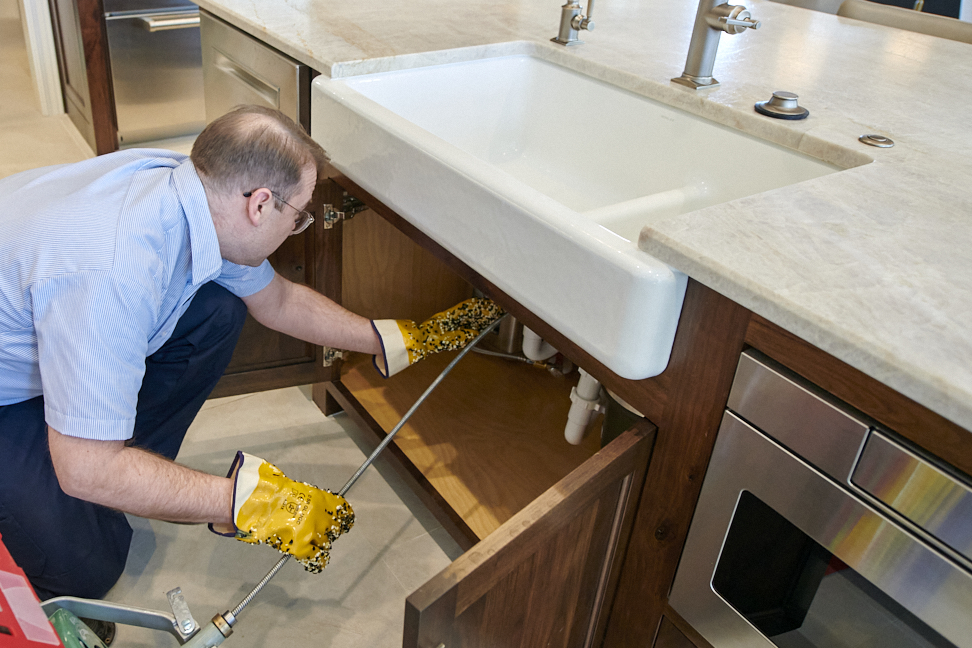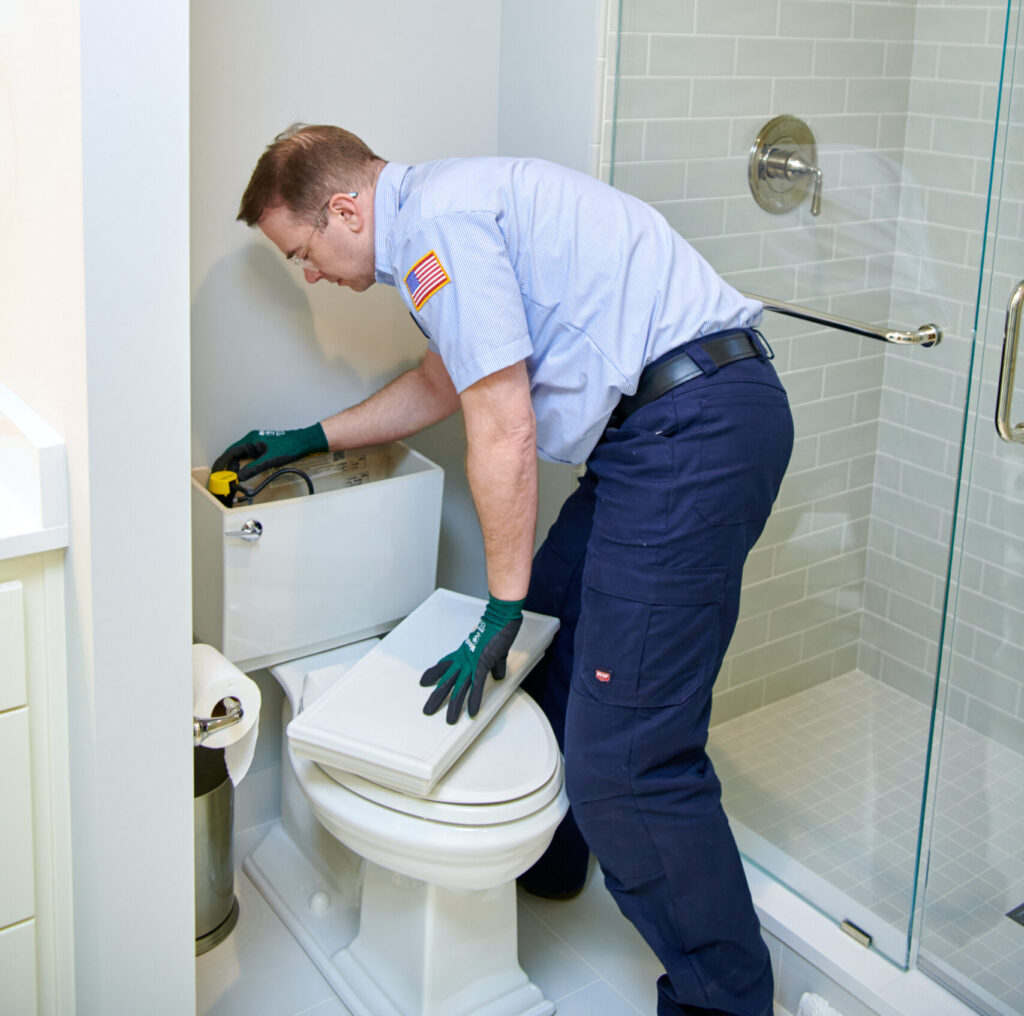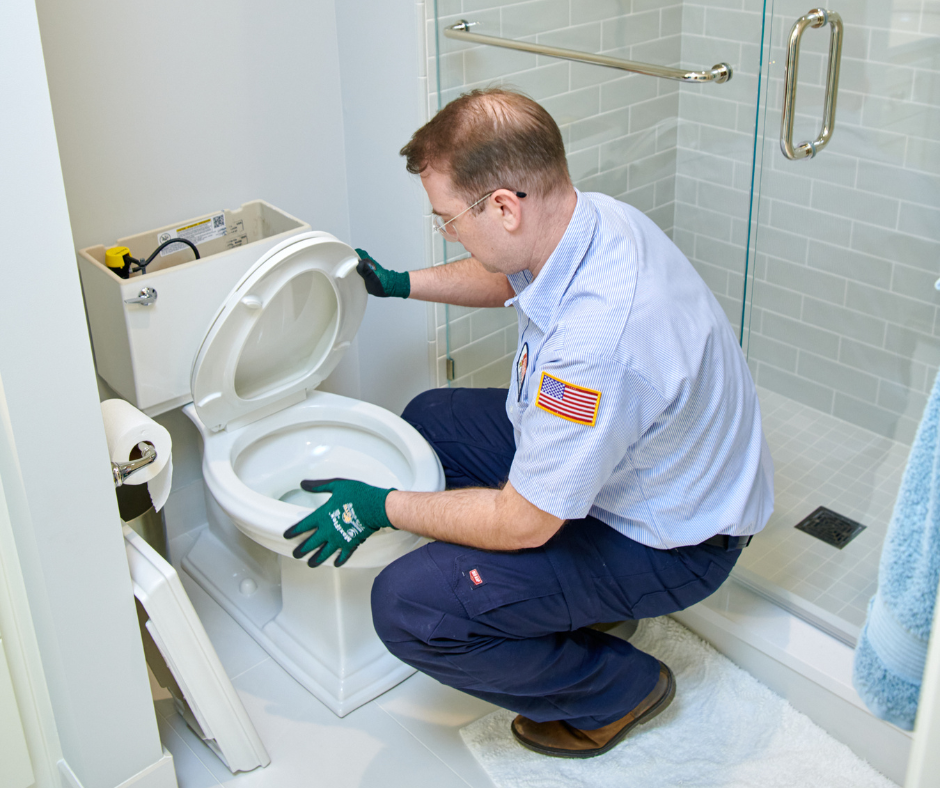BLOG
Using a Drain Snake: Everything You Need to Know and When to Seek Help

Clogged drains are a common issue for homeowners, and while many clogs can be handled with household tools, some require a little more muscle. Enter the drain snake. If you’re dealing with stubborn clogs and have tried basic solutions without success, a drain snake might be the tool for you.
This guide will provide you with essential information on how to use a drain snake effectively and help you determine when it’s time to call in a professional.
What is a Drain Snake and How Does It Work?
A drain snake, also known as a plumbing auger, is a long, flexible tool designed specifically to navigate through your plumbing system to dislodge or remove blockages.
Unlike chemical drain cleaners, which can corrode pipes over time and potentially damage your plumbing, a drain snake offers a mechanical solution. It works by physically breaking up or retrieving the clog, which makes it both an effective and safe option for your home’s plumbing.
A drain snake is a coiled metal wire housed in a spool or drum, designed to navigate through pipes by bending around curves. When it hits a blockage, the coil grabs or breaks up the debris, allowing it to be removed or flushed away. This versatile tool can clear blockages like hair, grease, or small objects.
Types of Drain Snakes
There are several different types of drain snakes available, each suited for different types of clogs and drain sizes. Choosing the right drain snake is crucial to efficiently clear a blockage without causing damage to your pipes.
Manual Drain Snakes
Manual drain snakes are hand-operated tools ideal for small clogs in sinks and shower drains. They're affordable, easy to use, and require no electricity or special training. By cranking the handle, you extend the coiled wire to dislodge clogs caused by hair, soap scum, or grease.
Drum Augers
Drum augers are designed for toilets and larger fixtures, featuring a longer, thicker cable housed in a drum. They effectively tackle deeper clogs in toilets, bathtubs, and floor drains. Operated with a crank, drum augers are ideal for driving through tough blockages.
Electric Drain Snakes
Electric drain snakes are ideal for deep or tough clogs, powered by a motor that automatically turns the cable. They're especially effective for main sewer line blockages caused by tree roots, dense debris, or grease, requiring less manual effort.
Step-by-Step Guide: How to Use a Drain Snake
Although there are several types of drain snakes, the general principles of their use remain consistent. Below is a step-by-step guide on how to use a drain snake while avoiding common issues.
Step 1: Choose the Right Snake
The first and most crucial step in using a drain snake is selecting the appropriate tool for the job. Not all clogs are created equal, and using the wrong type of snake can make the situation worse or even damage your pipes.
Choosing the right drain snake is important so that you have the right amount of power and flexibility for the job at hand, minimizing the risk of damaging your plumbing system.
Step 2: Insert the Snake
Once you've selected the appropriate snake for your clog, it's time to begin. Start by preparing the area around the drain.
- Prepare the Drain: If you're working with a sink or bathtub, make sure to remove any stoppers, strainers, or overflow plates. This will allow easier access to the drain opening and ensure the snake can go in smoothly without obstruction.
- Feed the Snake into the Drain: Carefully insert the coiled end of the drain snake into the drain opening. Be gentle and avoid forcing the snake, as this could cause the cable to bend or kink, which would reduce its effectiveness.
- Twist as You Go: As you feed the snake into the pipe, twist the handle gently. This helps the coiled wire navigate the bends and curves of your plumbing system, especially in older homes with more complicated piping. The twisting action also helps prevent the snake from getting stuck on the pipe walls or sharp bends.
- Go Slowly: It’s important to take your time during this step. Pushing the snake too quickly can cause it to coil up within the pipe, making it harder to reach the clog.
Step 3: Work the Snake
Once you feel resistance or hear scraping sounds, you've likely reached the clog. This is when the snake becomes most effective.
- Handle Resistance Carefully: If the snake stops moving freely and you encounter resistance, do not force it. Forcing the snake can damage both the tool and your pipes. Instead, try to rotate the handle while gently pushing forward. This will help the snake work its way into the clog.
- Rotate to Break Up the Clog: By turning the snake’s handle clockwise, you can help the coiled wire grab onto the debris. Continue rotating the handle, pushing and pulling the snake slightly to either break up the blockage or latch onto it.
- Feel for the Clog: If the snake begins to feel less resistant after rotating, this is a good indication that the clog has been broken up or dislodged. You might feel the tension ease as the snake progresses further down the pipe.
Step 4: Remove the Snake
After working the snake and clearing the blockage, it's time to remove the tool from the drain.
- Pull the Snake Out Slowly: Carefully and slowly retract the snake from the drain. As you do this, some of the debris from the clog may come out with the snake. Be sure to have a bucket or towel nearby to catch anything the snake may bring up.
- Check for Clear Drainage: Once the snake is fully removed, run water through the drain for a few minutes to confirm that the blockage has been cleared. If the water flows smoothly and there’s no standing water, your job is complete. If not, you may need to repeat the process or consider calling a professional for a more thorough inspection.
Step 5: Clean the Snake
Once the clog is cleared, thoroughly clean the drain snake to avoid any buildup or contamination on the tool.
Troubleshooting Common Issues
Even with the best of intentions, problems can arise when using a drain snake. Here are some common issues you might encounter and tips on how to address them:
- The snake won’t go down the drain: This can happen if the snake is too large for the pipe or if the pipe is heavily clogged. Try using a smaller snake or removing the clog in smaller stages.
- The snake gets stuck: If the snake becomes lodged in the pipe, stop applying pressure and gently reverse the direction. Never force the snake, as this can cause damage to both the snake and your plumbing.
- The clog isn’t clearing: In some cases, the clog may be too far down the drain or too solid to remove with a snake. If multiple attempts don’t resolve the issue, it’s time to consider professional help.
How to Know It’s Time to Call a Professional
While a drain snake can be a powerful tool for tackling minor clogs, there are times when even the most skilled DIYer should hand the job over to a professional plumber. Knowing when it’s time to make that call can save you from further damage and costly repairs.
Persistent or Recurring Clogs
If you’ve snaked your drain multiple times and the clog keeps coming back, there’s likely a deeper issue that needs professional attention. Recurring clogs may indicate a larger problem within your plumbing system, such as tree root intrusion or damaged pipes.
Slow Drainage After Snaking
If your drain continues to run slowly after snaking, the clog may only be partially cleared, or there could be a buildup of grease, hair, or debris lining the walls of your pipes. A professional plumber can assess the situation and use advanced tools like hydro-jetting to fully clear the blockage.
Strange Smells or Gurgling Noises
Foul odors or gurgling sounds coming from your drain can indicate a blockage in the sewer line, which requires immediate professional intervention. Sewer line issues can lead to serious problems like sewage backup, which can damage your home and pose health risks.
No Access to the Clog
If the clog is located deep within your main drain line or in a hard-to-reach area, it’s time to call a plumber. Professionals have specialized equipment to reach clogs that are too far down for a typical DIY snake to access.
You’re Unsure of the Cause
Sometimes, clogs aren’t caused by debris alone. Corroded pipes, tree roots, or a collapsed sewer line can all mimic the symptoms of a clogged drain. In these cases, a professional inspection is necessary to diagnose the underlying issue.
By recognizing these signs, you can avoid costly damage and ensure your plumbing remains in top condition. If you’re unsure whether your clog is something you can handle, it’s always best to consult a professional.
Keeping your drains clear is essential to maintaining a functional and healthy home. While learning how to use a drain snake can save you time and money, it’s equally important to know when a problem is beyond a simple DIY fix.
If you find yourself dealing with persistent or severe clogs, the team at Anthony is here to help. We offer comprehensive drain cleaning services in Kansas and Missouri, so you can rest easy knowing your home’s plumbing is in expert hands.
For more tips on maintaining your home’s plumbing system, check out our blog on drain cleaning basics.




